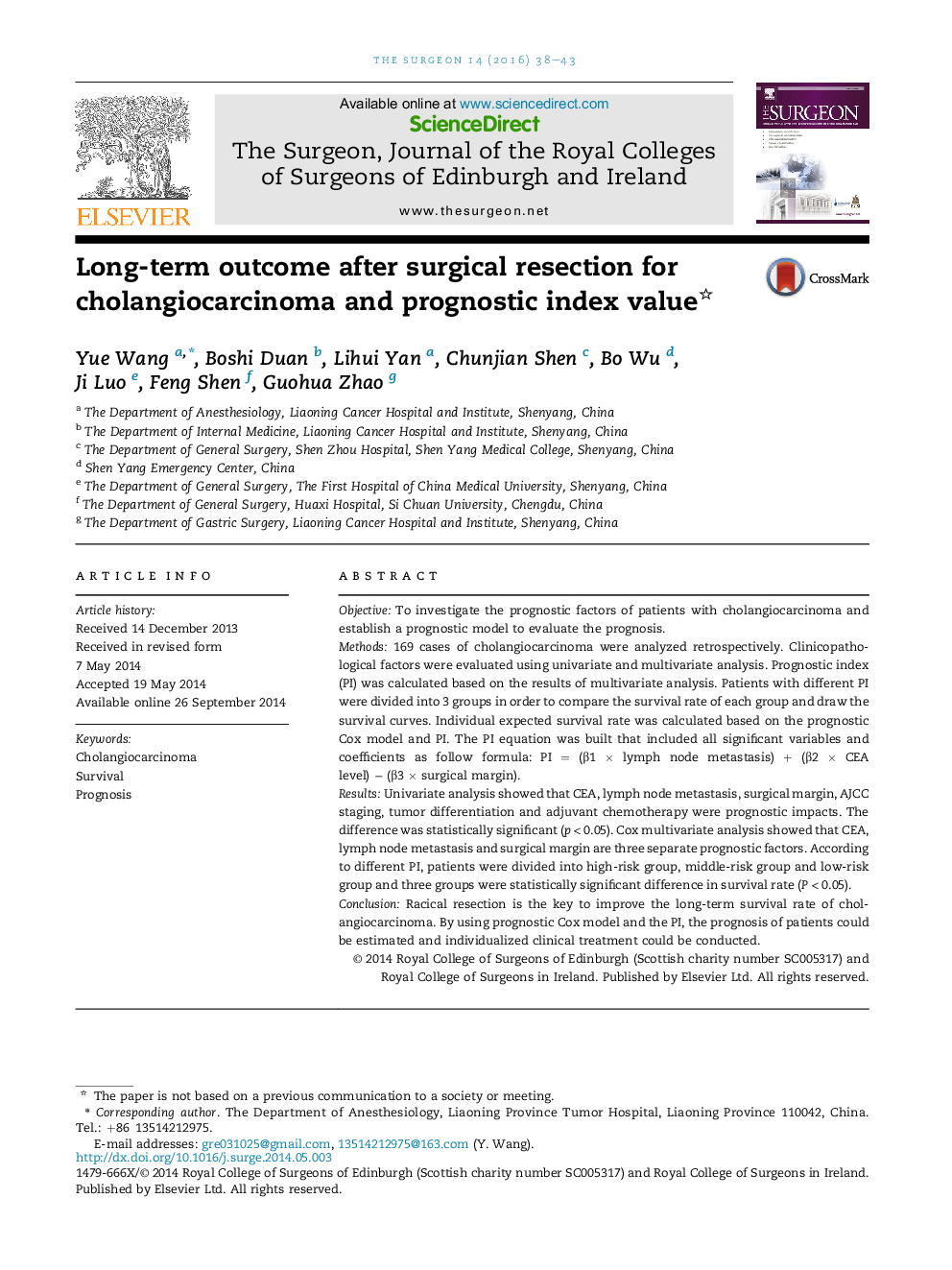| Article ID | Journal | Published Year | Pages | File Type |
|---|---|---|---|---|
| 3178509 | The Surgeon | 2016 | 6 Pages |
ObjectiveTo investigate the prognostic factors of patients with cholangiocarcinoma and establish a prognostic model to evaluate the prognosis.Methods169 cases of cholangiocarcinoma were analyzed retrospectively. Clinicopathological factors were evaluated using univariate and multivariate analysis. Prognostic index (PI) was calculated based on the results of multivariate analysis. Patients with different PI were divided into 3 groups in order to compare the survival rate of each group and draw the survival curves. Individual expected survival rate was calculated based on the prognostic Cox model and PI. The PI equation was built that included all significant variables and coefficients as follow formula: PI = (β1 × lymph node metastasis) + (β2 × CEA level) − (β3 × surgical margin).ResultsUnivariate analysis showed that CEA, lymph node metastasis, surgical margin, AJCC staging, tumor differentiation and adjuvant chemotherapy were prognostic impacts. The difference was statistically significant (p < 0.05). Cox multivariate analysis showed that CEA, lymph node metastasis and surgical margin are three separate prognostic factors. According to different PI, patients were divided into high-risk group, middle-risk group and low-risk group and three groups were statistically significant difference in survival rate (P < 0.05).ConclusionRacical resection is the key to improve the long-term survival rate of cholangiocarcinoma. By using prognostic Cox model and the PI, the prognosis of patients could be estimated and individualized clinical treatment could be conducted.
